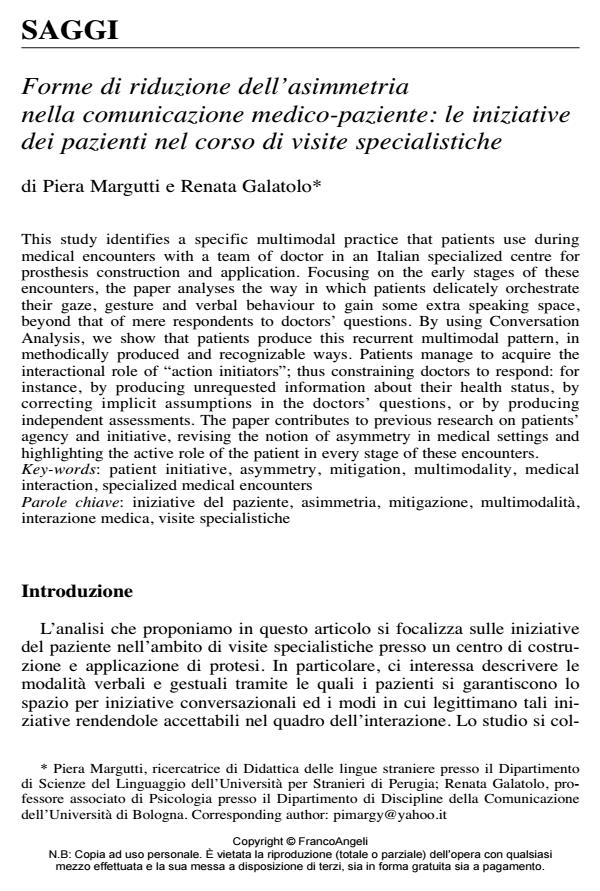Forme di riduzione dell’asimmetria nella comunicazione medico-paziente: le iniziative dei pazienti nel corso di visite specialistiche
Titolo Rivista SALUTE E SOCIETÀ
Autori/Curatori Piera Margutti, Renata Galatolo
Anno di pubblicazione 2013 Fascicolo 2013/1
Lingua Italiano Numero pagine 14 P. 19-32 Dimensione file 117 KB
DOI 10.3280/SES2013-001003
Il DOI è il codice a barre della proprietà intellettuale: per saperne di più
clicca qui
Qui sotto puoi vedere in anteprima la prima pagina di questo articolo.
Se questo articolo ti interessa, lo puoi acquistare (e scaricare in formato pdf) seguendo le facili indicazioni per acquistare il download credit. Acquista Download Credits per scaricare questo Articolo in formato PDF

FrancoAngeli è membro della Publishers International Linking Association, Inc (PILA)associazione indipendente e non profit per facilitare (attraverso i servizi tecnologici implementati da CrossRef.org) l’accesso degli studiosi ai contenuti digitali nelle pubblicazioni professionali e scientifiche
This study identifies a specific multimodal practice that patients use during medical encounters with a team of doctor in an Italian specialized centre for prosthesis construction and application. Focusing on the early stages of these encounters, the paper analyses the way in which patients delicately orchestrate their gaze, gesture and verbal behaviour to gain some extra speaking space, beyond that of mere respondents to doctors’ questions. By using Conversation Analysis, we show that patients produce this recurrent multimodal pattern, in methodically produced and recognizable ways. Patients manage to acquire the interactional role of "action initiators"; thus constraining doctors to respond: for instance, by producing unrequested information about their health status, by correcting implicit assumptions in the doctors’ questions, or by producing independent assessments. The paper contributes to previous research on patients’ agency and initiative, revising the notion of asymmetry in medical settings and highlighting the active role of the patient in every stage of these encounters.
Parole chiave:Iniziative del paziente, asimmetria, mitigazione, multimodalità, interazione medica, visite specialistiche
Piera Margutti, Renata Galatolo, Forme di riduzione dell’asimmetria nella comunicazione medico-paziente: le iniziative dei pazienti nel corso di visite specialistiche in "SALUTE E SOCIETÀ" 1/2013, pp 19-32, DOI: 10.3280/SES2013-001003